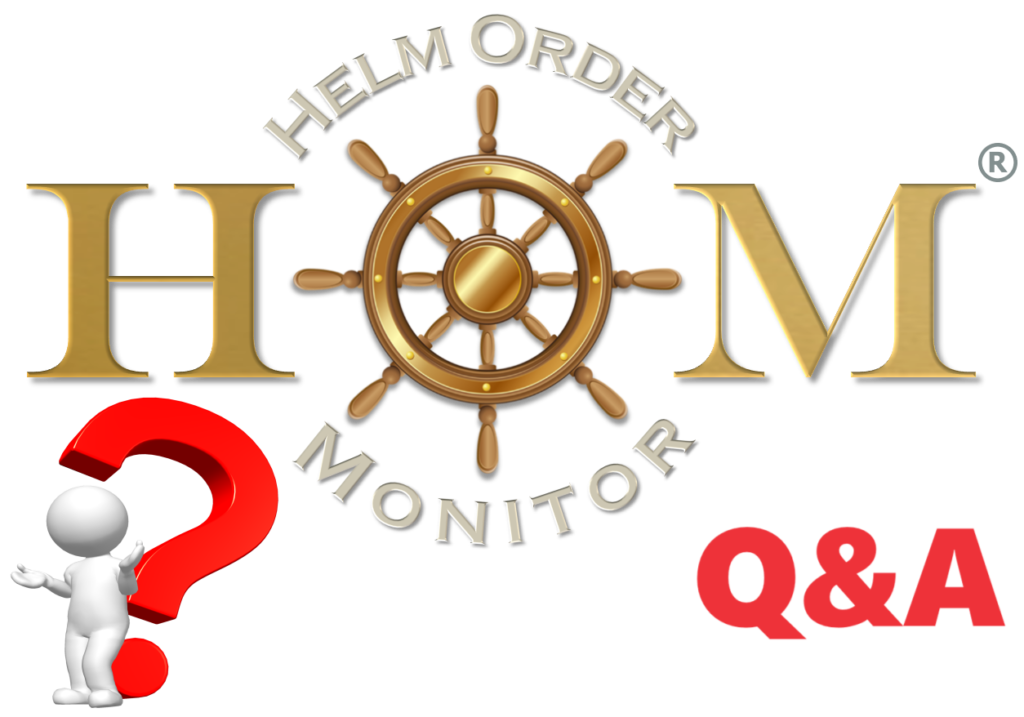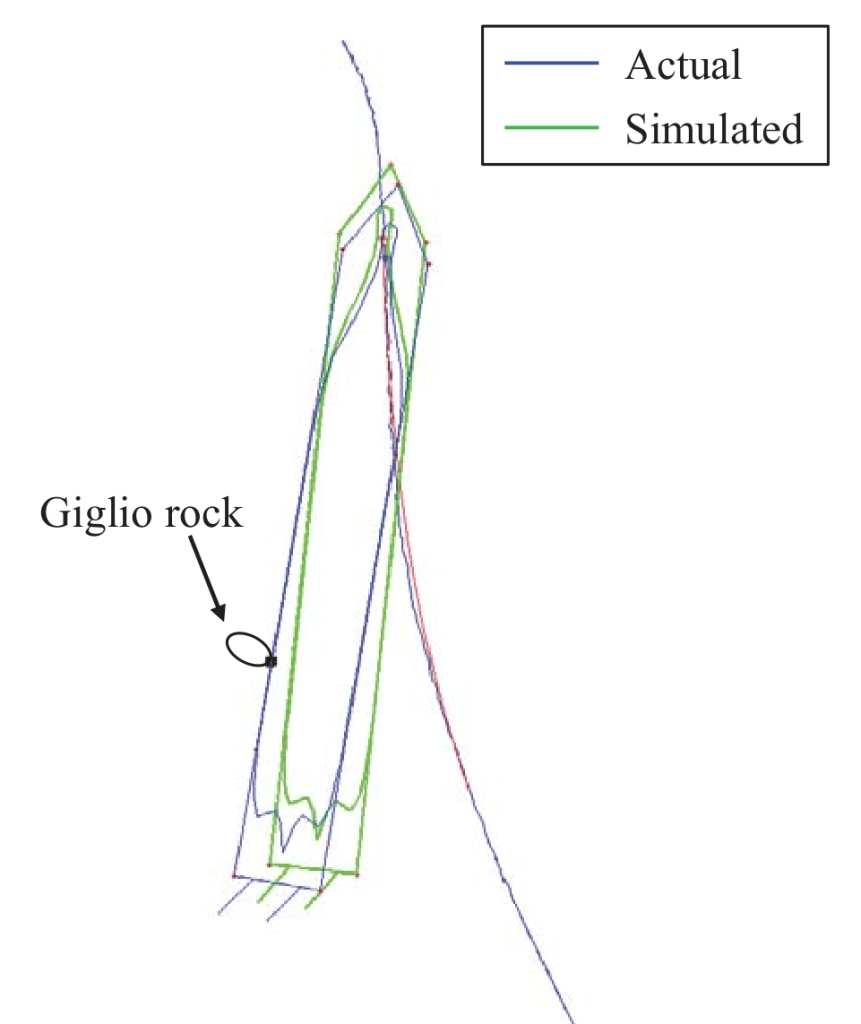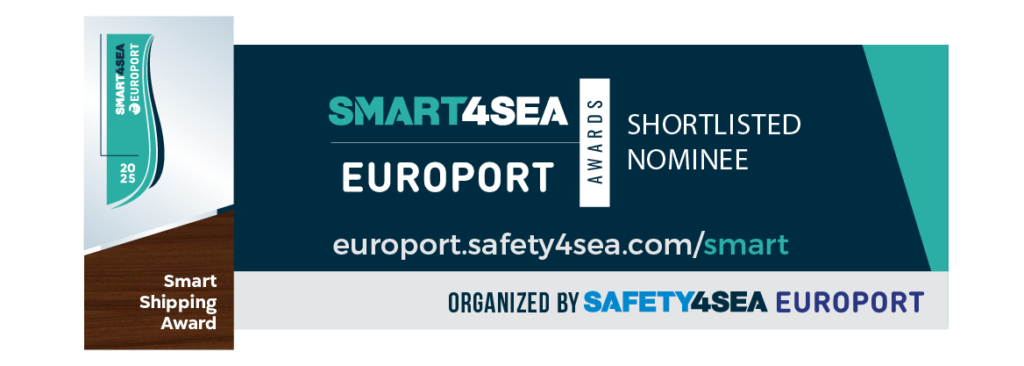
ELNAV is developing a so-called Helm Order Monitor. This is an electronic device intended for use on the navigational bridge of ships, that addresses the problem of insufficient monitoring of helm orders between helmsman and pilot or navigator. The device uses automatic speech recognition, but also monitors, in accordance with maritime regulations and in conjunction with the ship’s sensor data, whether the orders issued are clear, confirmed, and correctly executed.
Below are the main problems that Helm Order Monitor solves:
- The most apparent problem is that nothing prevents a helmsman from putting the rudder over the wrong way. The helmsman can also misinterpret or otherwise wrongly execute issued helm orders. Therefore, monitoring the execution of the order remains of paramount importance.
- The absence of a reliable alert system to verify manual steering mode during transitions poses a significant risk to navigation safety.
- Most automated warnings are not available in hand steering, such as Default RoT deviation warning, Drift limit alarm, Max. rudder alarm and Low-speed alarm.
- Monitoring of helm orders requires a high level of concentration which reduces situational awareness.
- Unsafe stress level is another significant contributor to navigational incidents.
As a lesser-known fact, in the last 5 minutes before the Costa Concordia breached the hull near Giglio island, a series of wrong helm order interpretations were recorded on VDR, including the wrong helm at a crucial moment, just 22 seconds before the impact.
To investigate the effects of the helmsman’s error on the impact with the rocks, a dedicated simulator was developed. The figure shows the results obtained. The blue line represents the actual ship position at impact time, while the green line represents the simulated ship position without the helmsman’s error. The black ellipse represents the rock’s position.
One could safely state that, according to the simulator, the ship would have passed close to the rock without impact.
Please see the investigation report of Costa Concordia casualty on following link: https://elnav.ai/wp-content/uploads/2022/01/Costa_Concordia_-_Full_Investigation_Report.pdf
In an investigation report of a marine accident that involved a helmsman applying the wrong helm, Australian Transport Safety Bureau stated: THIS TYPE OF ERROR IS NOT UNCOMMON.
As there was no feasible solution, helmsman errors were considered an unavoidable risk in the maritime industry. The number of close call situations that could end in loss of lives and oil pollution counts in hundreds every year. We can only guess how many accidents occurred by the fatigue contributed by these obsolete procedures.
While researching the number of accidents caused by helmsman error, we realized that these errors are not classified. We searched each country’s investigative reports for marine accidents such as collisions and groundings and found that helmsman errors are quite a common occurrence. We are continuing our research as many countries are not making their investigative reports available to the public / or reports have to be translated.
Please see the case studies in our EXTRAS material: https://elnav.ai/index.php/case-studies/
At open sea, ships mostly sail with autopilot or trackpilot turned on, but to enter/exit the port or pass-through narrow channels, the ship must go to manual steering. The helmsman does the steering while a maritime pilot or navigator issues verbal helm orders.
Automatic helm monitoring is only available when the ship has engaged auto-pilot or trackpilot in either heading, course, or track mode. But when the ship is in the manual mode, also called “hand steering,” monitoring is reduced to Rudder angle indicator, compass, and ROT (rate of turn) indicator.
In other words, if the helmsman applies the wrong helm, there will be no warning. The ship will continue to turn to the wrong side unless caught by the bridge team.
Case studies have shown that the average time for a bridge team to notice the wrong helm is 7 to 8 seconds. As per IMO Initial Turning Ability Criterion, with the application of a 10-degree rudder angle, the vessel must not travel more than 2.5 ship lengths before the vessel’s heading has changed 10 degrees. If this is translated in higher rudder angles, it is clear that 7 to 8 seconds of the wrong helm can be impossible to correct. That is why monitoring the order’s execution remains of paramount importance, as documented in ships’ manuals.
There will also be no warning if the ship deviates from a steady course. The only way to see this is by constantly monitoring the compass heading or the ground reference.
The main benefits of this device are:
- The helmsman will have to repeat the helm orders clearly, and the device will issue visual and audio warnings if the helm order is being omitted, misinterpreted, or wrongly executed.
- The built-in alert system ensures smooth and safe operations by prompting the crew to verify manual steering mode during transitions, reducing the risk of errors and enhancing navigational safety.
- Assistance in monitoring the execution of helm orders when the concentration drops.
- Warning about unsafe stress level on the navigational bridge.
- Indicator of the last issued helm order.
- Implementation of automated warnings otherwise not available in hand steering, such as Default RoT deviation, Drift limit alarm, Max. rudder alarm and Low-speed alarm.
- Transcription of recorded data as an analytical tool and performance benchmarking for insurance companies, shipping companies, nautical schools/colleges, and training centers for seafarers.
Navigational incidents are a significant concern in the maritime industry, and one contributing factor that often goes unnoticed is elevated stress levels among the navigational bridge team. We are on a mission to create a specialized Speech Emotion Recognition (SER) system that addresses this critical issue by implementing cutting-edge technology that detects and alerts the team about heightened stress levels, ultimately enhancing situational awareness and preventing potential accidents.
In a study conducted by Transport Canada, when pilots were asked whether language barriers make it challenging to communicate orders to the helmsman on foreign-registered vessels, some 60% replied that language barriers “sometimes” affect communication with the helmsman. In comparison, 20% reported that it “often” resulted in difficulty communicating.
Helm Order Monitor forces the helmsman to clearly repeat the helm orders, thus reducing the strain on the pilots and other bridge team members. There is no other product in the maritime industry that is compelling to clear communication.
In the same study, pilots stated that the major problem in pilotage anywhere in the international scene is the language barrier. They could not see how the language problem could be solved in the near future. They fear that it will again be a case of the marine industry experiencing accidents before any positive action is taken and regulations implemented.
Thanks to rapid advances in ASR technology, the Helm Order Monitor is now in a unique position to become an example of positive action towards language barrier problem solutions in the maritime industry.
Please see the study above on following link: https://elnav.ai/wp-content/uploads/2022/01/Transport-Canada-sm9501.pdf
T 3:29 – Voice-activated timer (max. 10 minutes) – automatically starts upon recognizing sentences that include time and following phrases: wheel over point, wheel over line, abort point, and point of no return. The timer can also be activated with the required time and the “HOM TIMER” voice command. Some of the examples:
- “WHEEL OVER POINT IN 3 MINUTES”
- “WHEEL OVER LINE IN 2 MINUTES (AND) 35 SECONDS”
- “ABORT POINT IN 5 MINUTES”
- “POINT OF NO RETURN IN 4 AND A HALF MINUTES”
- “HOM TIMER IN 4 MINUTES”
D.RoT – DEFAULT RATE OF TURN
Only ships above 50.000 BRT are required to install the Rate of Turn (ROT) sensor so this is an optional setting.
The default rate of turn alarm is activated when the difference of more than 2,5 degrees between the default rate of turn and the actual rate of turn is reached.
DR.AL. – DRIFT ANGLE ALARM
The drift angle alarm is activated when the maximum allowed drift or angle between the heading and the course over ground is reached. Users can choose the amount of drift.
As the drift angle limit is not available in hand steering mode, we have integrated the drift angle alarm to extend its functionality.
RD.AL. – MAXIMUM RUDDER ALARM
It is informal shipboard practice on many ships for the helmsman to warn the bridge team of the need to apply rudder in excess of the pre-agreed number of degrees to keep the vessel on course.
By automating this task, we are mitigating the human contribution factor with technology.
Yes, and any new suggestions are more than welcome. Please use our contact form.
- “NO HOM” – cancels last order and goes to listening screen
- “HOM OFF” – renders device in the inert state (sleep mode)
- “HOM ON” – wakes up the device
- “HOM BRIGHT” – adjust the brightness to auto mode, when repeated it reverts to the previous state
- “HOM BUZZ” – turns the buzzer off, when repeated it switches the buzzer back ON
- “HOM WING” – shifts between microphones installed on the bridge wings and bridge center.
Half of the time, ships travel overnight, sometimes in low visibility conditions and relying on radar and lights from other ships. Any light pollution can make it difficult to spot approaching vessels at night. Screens must generate as little light as possible while still being easy to understand at a glance.
To minimize any excess light from the device, we designed a dark interface and paid particular attention to color contrast to ensure legibility. The device has an inbuilt ambient light sensor to diminish extra light emission automatically.
Navigational technology in the maritime industry has not seen significant upgrades in the last thirty years. The aesthetics of the tools onboard reflect that, widening the gap with modern smartphones that crew carry in their pockets.
We designed the Helm Order Monitor to facilitate ease of use and avoid “mistaps,” especially crucial in congested areas.
We also ensured gestures were familiar and intuitive, taking inspiration from the current equipment and technology the bridge team would be familiar with.
Since there are 30 types of navigation equipment mandatory for installation on the navigational bridge, Helm Order Monitor is of minimal dimensions to fit more easily among the myriad of existing marine navigation equipment.
We turned to sound notifications to develop a system that wouldn’t rely solely on sight. The noise level on the bridge is not to interfere with verbal communication, mask audible alarms or be uncomfortable to the bridge personnel. In this respect, the ambient noise level on the bridge in calm weather should not exceed 65 dB(A).
Sound warnings consist of short buzzer signals that are sufficiently alarming and, at the same time, do not increase the cacophony of already existing warning sound signals on navigational bridges. The signs with a buzzer are as follows – examples are for helm orders by course:
- One short signal – Drift limit alarm, Max. rudder alarm and Low-speed alarm.
- One long signal – signals the helm applied on the wrong side or no action was taken at all after issued helm order.
- Two short signals – signals the following communication situations:
– The helmsman misinterpreted helm orders.
– After executed helm order vessel was steady on the ordered course, but the helmsman did not call out.
– When the vessel is steady on the ordered course, and the helmsman called out, the pilot or navigator do not acknowledge the helmsman’s reply.
- Three short signals – signals the following regarding ship’s steering and course:
– After issuing helm order, the helm moves to the correct side, but the course changes slower or faster than the pre-set Rate of Turn speed (device settings).
– After the vessel is steady on the ordered course, she deviates more than 2 degrees.
– The helm moves to the correct side but without repeated helm order or acknowledgment that the helm order has been understood.
- Five short signals – warns about unsafe stress level on the navigational bridge, another significant contributor to navigational incidents.
Mounting considerations: the main unit can be installed on a desktop, overhead, or flush-mounted in a panel. The beamforming microphone is ceiling mounted. The repeater can also be installed overboard with an optional waterproof box.
Generally, the installation and service are given to contractors with whom a particular company has signed shore-based maintenance of navigation equipment (SBM) contract.
Optional equipment: Desk/ceiling-and wall-bracket (VESA 75x75mm), NMEA 0183 Multiplexer
Apart from shipboard use, our product is utilized in Nautical simulators to train proper use and execution of helm orders as per IMO Standard Marine Communication Phrases.
- Integration of captured audio recordings into existing VDR or S-VDR devices – the practice has shown that in case of a maritime accident, audio recordings collected from Voyage Data Recorders are often not of sufficient quality to be relevant to the investigation, as stated in many publications.
- Localization of automatic speech recognition in other languages used in maritime transportation.
- Improving the Ship Security Alert System (SSAS) protocol
- Option for automatic plotting of CHL (Curved Heading Line) on Radar and ECDIS (Electronic Chart Display Information System) for improved radius control.



